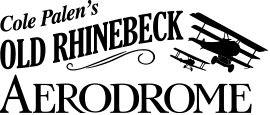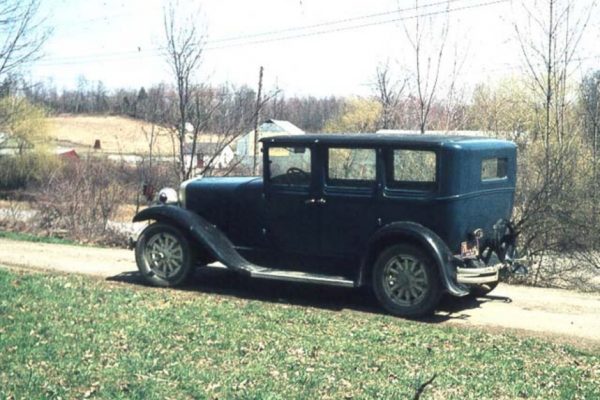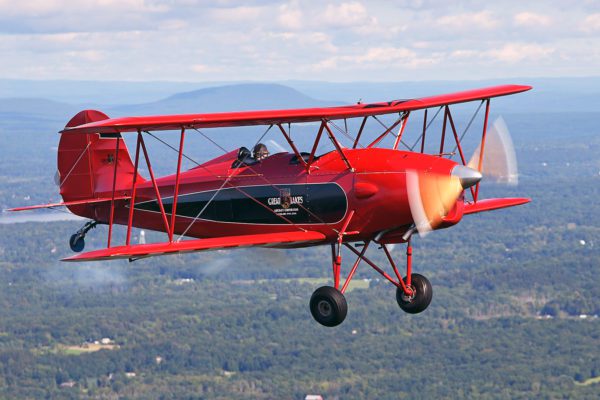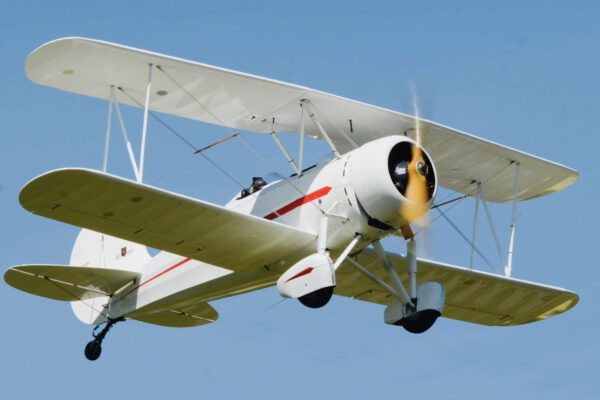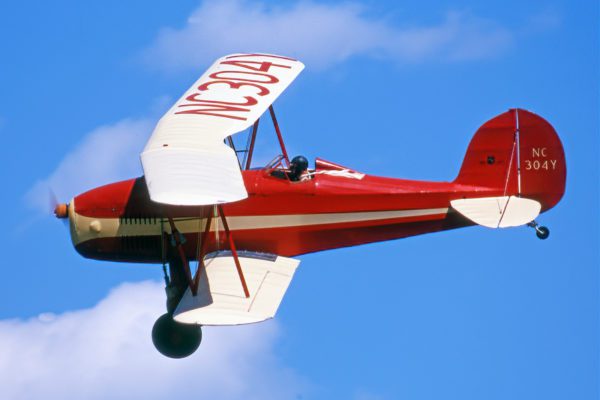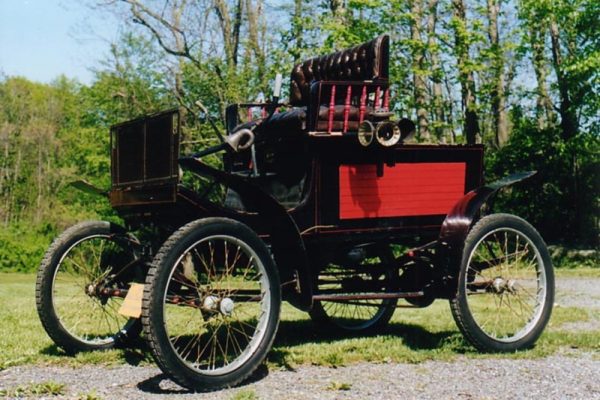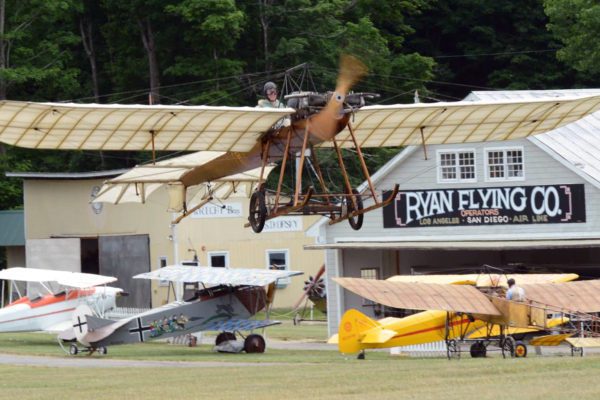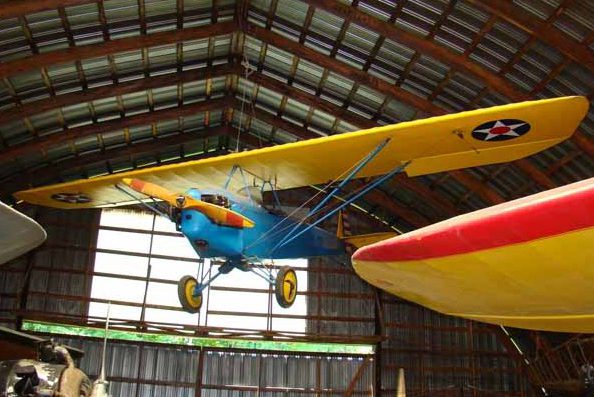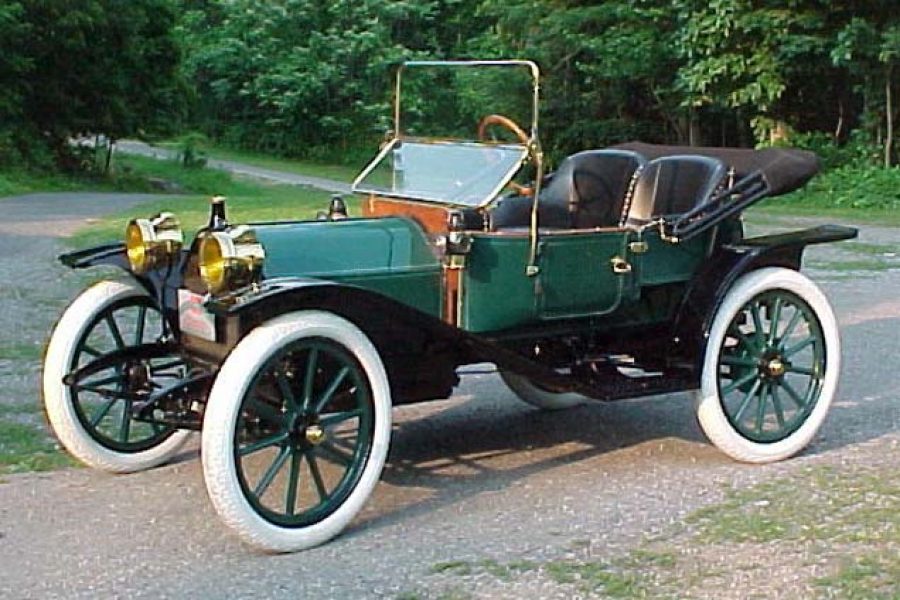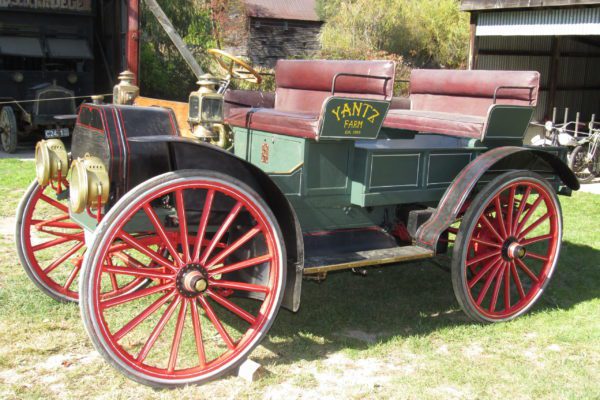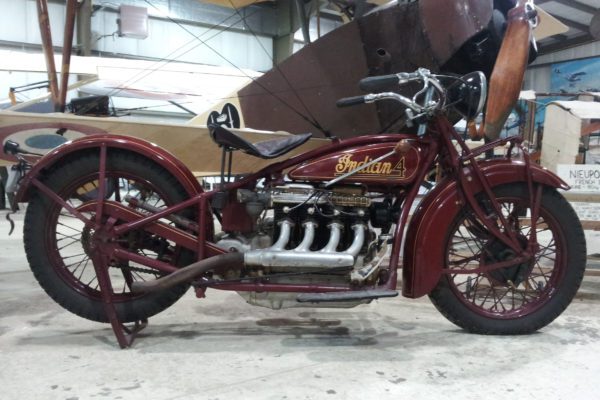H. H. Franklin was known as a motorcar pioneer and manufactured nothing but air-cooled automobiles. Their light construction was always used as a selling point. In 1923 the company advertised that a Franklin had been driven in 122-degree temperatures through the sandy Imperial Valley of California for hours with no bad results. Charles Lindbergh openly […]
Great Lakes
Year: 1931
Engine: Fairchild Ranger 6-440
Horsepower: 200
Wingspan: 28 ' 6"
Top Speed: 110 mph (176 km/hr)
Gr. Weight: 1580 lbs (717 kg)
Original/Reproduction: Reproduction
The Great Lakes biplane was introduced in 1929 by the Great Lakes Aircraft Company of Cleveland, Ohio. It has been in and out of production multiple times over the years by various owners up to the present day. Only minor changes have been incorporated along the way, the most significant being the use of modern engines. Its classic good-looks and pleasant performance have drawn aviators to this craft for many years and its appeal will no doubt continue well into the future. This is a homebuilt Great Lakes.
Great Lakes 2T-1E (Modified)
Year: 1931
Engine: Warner
Horsepower: 165
Wingspan: 28 ' 6"
Top Speed: 120 mph (192 km/hr)
Gr. Weight: 1618 lbs (734 kg)
Original/Reproduction: Original
In 1929, the Great Lakes Aircraft Company entered the civilian market with a versatile sport trainer that proved to be affordable, safe and aerobatic. In 1931, stunt pilot “Tex” Rankin helped popularize the Great Lakes by performing 131 consecutive outside loops and flying from the Canadian border to the Mexican border in a record 13 hours and 20 minutes. Orders for 650 trainers fizzled away as the Great Depression deepened. Only 264 were produced before the factory closed in 1936.
Great Lakes 2T-1MS
Year: 1931
Engine: Menasco Pirate
Horsepower: 125
Wingspan: 28 ' 6"
Top Speed: 110 mph (176 km/hr)
Gr. Weight: 1580 lbs (717 kg)
Original/Reproduction: Original
Great Lakes Aircraft produced 240 of their “Sport Trainer,” starting in 1929. They were soon famed as delightful aircraft capable of aerobatics. However, the company fell victim to the Great Depression. In more modern times the design was revived for limited production and as a home-build. Our Great Lakes was used for company promotion and as a trainer in Connecticut. It performed in our air shows from the early 70s until around 2000.
Grout Steam Car
In an effort to show the superiority of the Grout Steam car over the horse, the above slogan was used in advertising literature accompanied by a graphic depiction of a horse’s skeleton. Just four years later Grout discontinued their steamer line. In 1904 Grout introduced a gas-powered car but few were made as the company […]
Hanriot
Year: 1910
Engine: ENV (original equipment), 1939 Franklin of 50 HP in Aerodrome’s example
Horsepower: 35
Wingspan: 30 '
Top Speed: 50 mph (80 km/hr)
Gr. Weight: 500 lbs (227 kg)
Original/Reproduction: Reproduction
René Hanriot built and raced motorboats, so it is not surprising that this airplane appears to have a racing skiff for a fuselage. The light weight, “monocoque” fuselage was advanced for the time. Hanriot’s son flew this type airplane in European competitions, and at age 15, was the youngest licensed pilot in Europe. Our reproduction flies in our airshows and reached over 1000’ of altitude for an extended flight at Hammondsport, NY in 1976.
Heath Parasol LNA-40
Year: 1932
Engine: Continental A-40
Horsepower: 37
Wingspan: 31 ' 3"
Top Speed: 80 mph (128 km/hr)
Gr. Weight: 700 lbs (318 kg)
Original/Reproduction: Original
In 1926, Edward Heath started the homebuilt aircraft movement by designing a small, light airplane using surplus, WWI Thomas-Morse Scout wings and a Henderson motorcycle engine. He sold complete aircraft and a kit of parts that a builder could assemble with common hand tools. Heath died in a test flight, but his little airplane is still being home-built and his company went on to become famous for producing outstanding electronic assembly kits. Our example was built in 1932.
Hupmobile
Advertisements for the Hupmobile claimed that it was the dominant car of its type and never had a serious rival. Hundreds were shipped around the world to destinations such as Egypt, Russia, Japan, New Zealand and Australia. The Hupmobile was available in Runabout, Roadster, Touring Car and Coupe versions and prices ranged from $750 through […]
I.H.C. Auto Buggy
The high carriage wheels and solid tires of the I.H.C. auto buggy were used because the company felt that they were “ageless attributes of any good automobile” even though most other car manufacturers had already adopted smaller pneumatic tires by this time. Under good conditions the I.H.C. could achieve 15 to 20 M.P.H. A removable […]
Indian 4
The Indian Four evolved from the “Indian Ace”, a model that was produced for one year following the Indian company’s purchase of Ace Motor Corporation in 1927. The Four was designed by Arthur O. Lemon, the former Chief Engineer at Ace, who incorporated modifications such as trailing-link forks and quarter-elliptic leaf spring. Later the engine […]
